Intercultural Competence awareness Development-Acquisition Through a Spanish Language and Culture Course at an Institution of Higher Education with the aid of technology.
Research - (2022) Volume 7, Issue 4
Abstract
Learning a foreign language involves not only linguistic competence but also intercultural awareness. Intercultural awareness involves a deeper understanding of different cultures through connection, tolerance, and global interaction. For this case study, the qualitative research elaborated on textual descriptions of how students constructed meaning and experienced language learning and cultural awareness development due to participating in an introductory university-level Spanish course. In addition, qualitative data provided information about the students’ perceptions and points of view related to culture and language. The intellectual framework to conduct the investigation revealed differences connected to view of the students' construction of meaning across course sections. Results across the four-course sections showed a higher level of language learning and cultural awareness development depending on the interactive dynamic within the course.
Haberler
Haberler
Haberler
Haberler
Haberler
Haberler
Haberler
Haberler
Haberler
Haberler
Haberler
Haberler
Haberler
Haberler
Haberler
Haberler
Haberler
Haberler
Haberler
Haberler
Haberler
Haberler
Haberler
Haberler
Haberler
Haberler
Haberler
Haberler
Haberler
Haberler
Haberler
Haberler
Haberler
Haberler
Haberler
Haberler
Haberler
Haberler
Haberler
Haberler
Haberler
Haberler
Haberler
Haberler
Haberler
Haberler
Haberler
Haberler
Haberler
Haberler
Keywords
Foreign language teaching, Foreign language learning, Intercultural awareness, Spanish, Higher education, Hualitative design, Technology
Introduction
Many people would like to have the world back to what it was before the pandemic. According to Gee (2020: 1-2). “Change has not been part of higher education’s portfolio. We need to spend much more time developing a culture, which is a culture of change, a culture of accommodation, a culture of creativity. Higher education should be a place that fosters curiosity” Institutions of Higher Education (IHE) have a unique opportunity to develop students’ abilities in intercultural competency instead of foreign language anxiety and perfectionism. Specifically, (Horwitz, et al. 1986) have developed an argument presenting one of the challenges to language learning is that it extends beyond grammar, translation, and vocabulary. (Ladson-Billings 1995) emphasizes how instructor and student engagement increases interaction and poses a culturally relevant theory of education. We, specifically, consider how university students learning foreign languages can develop an understanding of multiple cultures. Language learning can move learners outside of their own culture and provide opportunities to understand perspectives from individuals in other cultures.
The focus of our study was to explore the role of how foreign language learning and cultural awareness development are connected during the instructional processes in an introductory undergraduate Spanish course. Specifically, we wanted to know more about learners’ language acquisition through the development of cultural awareness and competency. Exploring the use of best practices while acknowledging embedded student perceptions related to raising student cultural awareness remains unclear. Therefore, our main goal was to examine how, through the process of expanding awareness of cultural differences and norms, students would become conduits for social influence in a world characterized by rapid globalization. Our research question centers on understanding in what ways do undergraduate students’ experiences make meaning around language and culture in the context of an introductory Spanish course? We intend to share new understanding related to the impact of foreign language courses on cultural awareness and competency. We define cultural competency as the ability to communicate and interact efficiently with individuals outside of one’s own culture using an acquired understanding of other cultures (Ladson-Billings, 1995).
Strategies for educating monolingual students on cultural competency are complex. In the United States, there is a hegemonic structure (Skutnabb-Kangas 2020), with English as the primary language dominating all other languages within American society. Americans, at home and abroad, often assume other people should speak English, even if it is not the primary or only language spoken in their respective countries (Kassam, 2010, Tsuda, 2017), whereas, in many other nations, multiple languages are used and represented in cultural messaging (Tsuda 2017), In these other countries, such as those throughout much of Europe and Asia, cultural competency is embedded in the educational schooling system by including language learning across the K-12 curriculum (Kassam 2010).
A gap exists in the literature regarding students and teachers' perceptions on how foreign language and culture courses influence students’ cultural competency, specifically in an English-monolinguistic environment (Applebaum 2017, Liu, 2017). Our qualitative approach aimed to understand the effects of an introductory foreign language and culture course curriculum on the cultural awareness and competency of students enrolled in a four-year public IHE (Rolling Hills University-RHU) in the south-eastern United States. The study population included 96 undergraduate students across four course sections of an Introductory Spanish course taught the same instructor at RHU. American philosopher (Kuhn 1962) popularized the concept explaining how progress is not linear and instead results from “paradigm shift”. Although Kuhn used the concept in multiple ways, we recognized Ghiara’s (2019) definition of paradigm as an intellectual framework and a set of concrete puzzle solutions and how it could be used differently in studying the foreign language classroom.
Methods
Honarbin and Holliday 2005 described how qualitative researchers’ most significant interest is how participants understand and make sense of their world. This study has extensive, substantial views of university students constructed the meaning around Spanish language and culture, cross-cultural exploration, while producing a more holistic view of the phenomenon. It can be beneficial to understand university students’ growing worldviews by examining how language/culture teaching and learning can merge students’ previous personal and course experiences by combining instructional practices and methods.
Significance
In the United States, foreign language proficiency and cultural proficiency are not heavily emphasized in secondary or post-secondary education (Reagan and Osborn, 2003). Often the expectations among students entering higher education are not related to gaining cultural competency and foreign language proficiency (Liu 2017). For colleges and universities hoping to produce culturally competent students, high-quality foreign language and culture courses may play an essential role in expanding the cultural awareness and competency of deficient students (Liu 2017). University administrators have more access to information and should be able to better understand the part of foreign language courses in increasing student cultural competency. These foreign language courses have the potential to enhance the ability of future graduates to access, adapt, and apply knowledge; think independently by exercising appropriate judgment; and know how language requires meaning through context and its sociocultural surroundings.
Results and Discussion
Conceptual Framework
One of the theoretical lenses used was the conceptual framework of the ecology of language developed by Haugen (1972), who proposed language ecology to study the interaction of any given language and its environment. This term is used in research literature, and perhaps sociolinguistics did not develop Haugen's potential in an ecological approach. Until the 1990’s when Ecolinguistics, or ecological linguistics, emerged as a new paradigm considering the social context in which language is rooted and the broader ecological context, including other species and the physical environment. The core assumption of the framework is that we should study languages concerning each other and various social factors.
With a qualitative research design, other higher education practitioners in foreign languages and cultures may be persuaded and encouraged to consider the significant gaps in education that create prejudices and stereotypes. (Piaget's 1959; Vygotsky 1978),
and other constructivist-based theorists posit children's development must necessarily precede their learning, Piaget's view of universal stages and content of development expresses language and culture are independent, not dichotomic, elements. Vygotsky (1978), stressed the fundamental role of social interaction in the development of learning and cognition. As for second language development, when in the process of trading the original language for a new language for practical reasons, the principles of humanistic sociology emerge (Znaniecki 1963).
The ecology of language developed by Haugen (1972) and developed by other authors like Finke (2014), clarifies how language and culture are independent, not dichotomic, elements. Discrimination toward other cultures is perpetuated due to students' sole interest in grammar and other linguistic aspects of the Spanish language without regard for culture. Exploring linguistic pluralism, practitioners can address the hegemony of English to help students understand how this creates and replicates inequalities.
The other conceptual framework for the study was humanistic sociology, developed by (Znaniecki 1963). The core assumption of humanistic sociology is that cultural reality is based on meanings that individuals socially construct. This framework implies that individuals dynamically contribute to their own culture rather than being ruled by unchanging cultural norms. According to (Znaniecki 1963), culture is an ever-changing social system dependent on the group's historical and current values and behaviors under consideration. Therefore, the existence of societal norms depends on the participation of social agents (Znaniecki 1963). The statement that humans influence culture, and not the other way around, implies that human culture is inherently changeable, influenced by historical behavior and current generations' behavior.
For non-English speakers, widespread adoption of English by the population may constitute a change to their original culture. (Vygotsky’s 1978) ideas are consistent with (Znaniecki 1963) as he connected how community plays a significant role in the process of "making meaning." This framework of humanistic sociology is relevant to linguistic pluralism and our case study explained how the perceived dominance of a foreign language could impact both the dominant and subordinate language cultures.
Setting and Participants
We were able to gather data from a sample of 96 students enrolled in an introductory Spanish course. The data collection and analysis method allowed us to explore the shared characteristics of the participants. This study of cultural awareness and language learning was completed across four sections of an introductory Spanish course occurred during one academic semester at an RHU (pseudonym institutional name) located in the southern United States. For example, each of these course sections had the same instructor and curriculum as well as the same student enrollment (n=24). These groups represent four sections of a larger population of 17 sections in RHU available introductory language and culture course classes. The student-participants were at various stages in their academic journey to earn their four-year degrees. The number of student participants (N=96) for this study included students with one or more shared characteristics taking the same introductory foreign language and culture course. The purposeful sampling technique was used to generate reviews of events, experiences, and artifacts.
Languages and Intercultural Studies Placement Questionnaire
At the beginning of the semester, data was collected from the languages and intercultural course placement questionnaire completed by the students as part of the Getting Started portion of the course. The purpose in including this information was not to determine if the students who took the test felt their language had been accurately measured or if the content of the test was appropriate or not to the uses made of the tests, or to evaluate the questionnaire’s design and reliability. The data provided from this questionnaire, available on the learning management system (Figure 1) (Figure 2) (Figure 3).
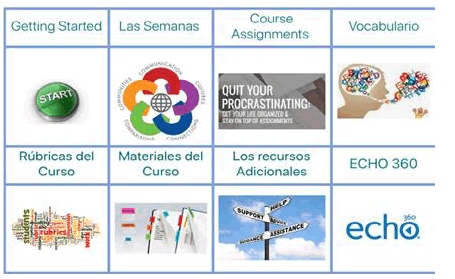
Figure 1: Learning Management System Advance Table
Note: This figure shows the Moodle page as seen by the students entering the learning management system.
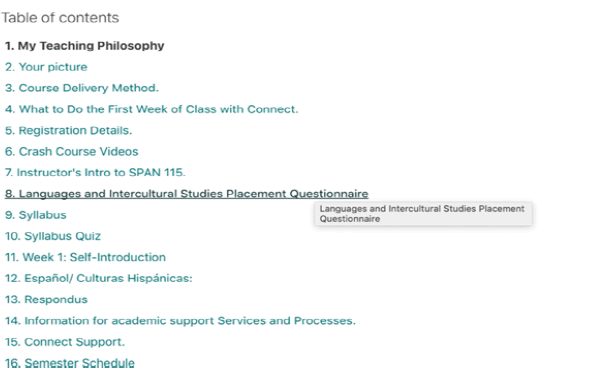
Figure 2: Getting Started Section on the Learning Management System (Moodle) –Placement Questionnarie.
Note: RHU. Languages and Intercultural Languages Placement questionnaire, placed on the getting started section of the LMS advanced table designed by the instructor.
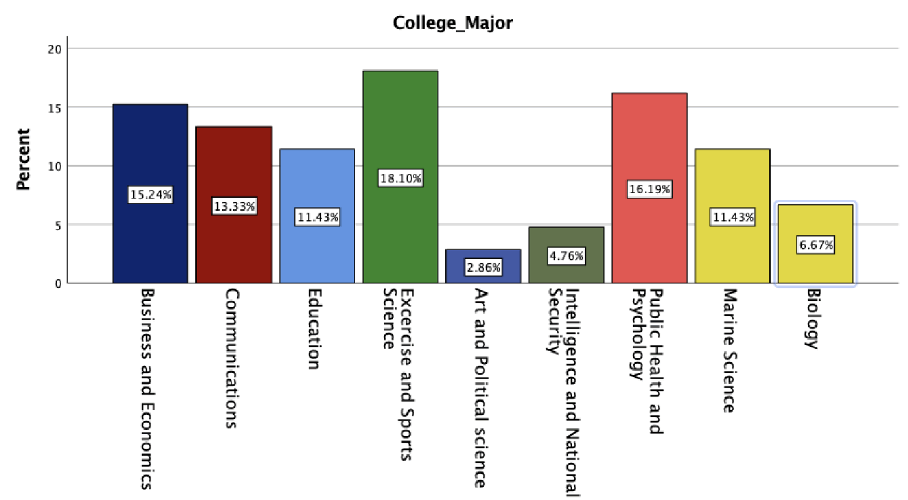
Figure 3: Students’ Majors and the Percentages of the Students Taking the Introductory Language and Culture Course
Note: This distribution of students was consistent with the student body distribution at the IHE.
Online Platforms
The students were exposed to three online instructional platforms. The use of three online platforms with different learning strategies was set to enable the students to take responsibility for enhancing their learning autonomy and independence. The essence of the course is student centered and the learners need to maintain course engagement even when they are no longer in a traditional classroom setting.
McGraw-Hill Connect
The textbook Tu Mundo included the four main components of listening, speaking, reading, and writing skills exercises. For these Spanish course activities, the instructional goal was to immerse the introductory Spanish classroom providing opportunities for the students to discover and explore connections between language and culture.
Moodle
The second platform students used to complete activities on the learning management system was Moodle. The assessment of learning outcomes for students’ performance included the skills related to listening, speaking, reading, and writing, and the assessment of intercultural competence.
Video Recording with ECHO 360
The third platform, ECHO 360, was utilized during the semester for student engagement before, during and after class via video recording and sharing from any device to support reading, listening, and speaking skills.
Sources of Data-Course Activities
Cultural forums: The asynchronous discussion forum portion of the course was a vital component of the course. It was a student-led online conversation among all the students from the four sections chosen for the study. These effective online discussion forums were conducive to deep learning. Ideally long-term retention about culture, language, pragmatics and cross-cultural comparison (Figure 4).
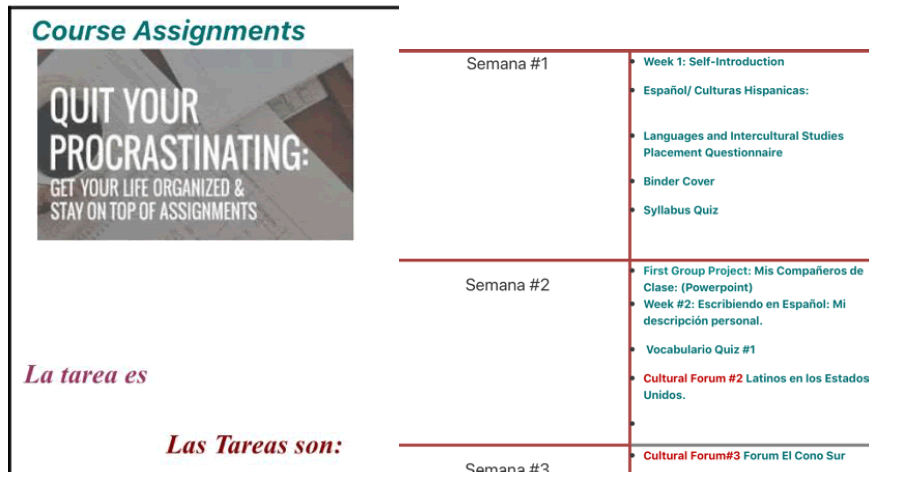
Figure 4: Course Assignments Section with the Cultural Forums for Each Week
Note: The curriculum included 10 cultural forums to be completed during the semester: Forum #1: Self-Introduction; Cultural Forum #2 Latinos en los Estados Unidos (part A); Cultural Forum #3 Latinos en los Estados Unidos (part B); Cultural Forum #4: El Cono Sur; Cultural Forum #5 and #6: Why Foreigners in their own land?; Cultural Forum #7: Los Países Andinos, viajando; Cultural Forum #8: Los Países Andinos Part II; Cultural Forum #9: La América Central; Cultural Forum#10: Los Famosos Hablando en español.
How the Code System was Generated
We used MAXQDA, a qualitative data analysis tool designed to help researchers, educational institutions to systematically organize, evaluate, interpret, and publish textual and multimedia data across websites, tweets, survey responses, and group discussions.
To code the qualitative data, we entered into MAXQDA all qualitative data from the cultural forums. We used a grounded theory coding approach consisting of two main phases, an initial phase involving naming each segment of data line by line, followed by and highlighting the context segments, identified terms, and filtered for later analysis. Next, we reviewed the code list (Figure 5), followed by a focused, selective phase using the most significant or frequent initial codes to sort, synthesize, integrate, and organize a large amount of data. The result was the following code set for the cultural forums (Figure 5).
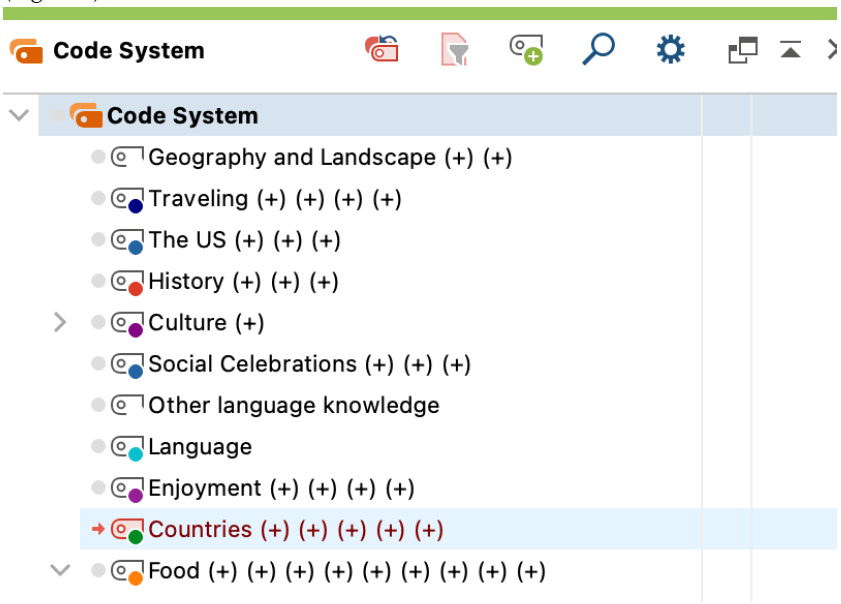
Figure 5: Sample Working with MAXQDA Generating the Code System for the Cultural Forums
Note: This table is an example of a frequency table of code occurrences during the initial coding process. Each (+) represents an occurrence while classifying the data.
Cultural Forums were online student-led discussions combined with electronic posters. Cultural forums provided valuable information about my students’ experiences learning Spanish and their cultural awareness development. The cultural forums’ results from the starting, the middle, and the end of the semester were coded. Coding parts (or ‘segments’) of a document is one of the functions of MAXQDA. This process allowed us to conduct a systematic qualitative content analysis.
The results were analyzed after students explained what they saw as relevant information compared with their perspectives and experiences to finally write a response to one or two peers on each forum. It was essential to see differences in perspectives from the students’ reactions and ways to make meaning by comparing others’ experiences with their own. It was necessary to see if the students have the same view of themselves as outsiders see them. Are locals interested in the same things as tourists? How do you travel and live like a local? Next, we examined the topics through an inductive analysis process for emerging themes (Figure 6).
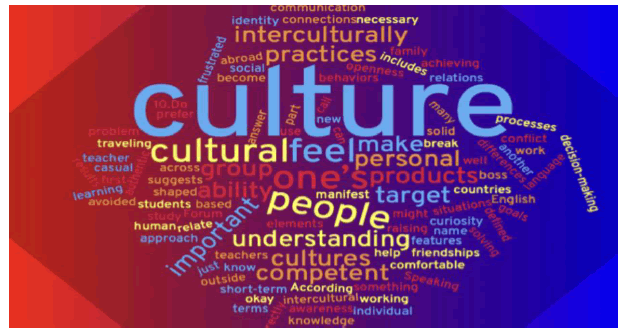
Figure 6: Word Cloud Representing Students’ Responses to the Cultural Forums
By the end of the semester, a summary of the cultural forums data resulted in a word cloud revealing words used by the students on their responses as follows, culture, understanding, differences of the language, and speaking Spanish and English.
This qualitative course data, perceived and learned during classroom social interactions or online interactions, helped identify students’ experiences and perceptions. These experiences and perceptions included insights into their social norms, socioeconomic status, gender roles, ethnicity, and religious dispositions. In addition, the qualitative portion of the research helped me better understand the complexity of the classroom experiences related to language learning and cultural awareness. Honarbin and Holliday (2005) expressed how qualitative researchers’ most significant interest is how participants understand and make sense of their world. As a reference of perspective from the Spanish as second language students, we took each of the categories coded from the cultural forums with opinions from students. The following statements are examples of students’ (with a pseudonym name) perspectives concerning their engagement in the course.
“Since we were not able to be in a classroom setting, it was nice being able to interact with students from different sections of the course.” (Kevin)
“I felt good about the cultural forums where I chose my materials to focus on because I got to learn more about the things I wanted to.” (Laura)
“I genuinely enjoyed the cultural forum assignments because we could choose the materials to focus our entries on based on which materials interested us the most.” (Landon)
These three statements from students present a developing agency and demonstrate the shift of learning control from the instructor to the student.
Using Electronic Posters in the Introductory Language and Culture Course
Digital posters were included in the reading comprehension, writing, and engagement of the students at RHU with the introductory language and culture course. The instructional role of the electronic posters was to complement the work from the cultural forums in a more creative approach to become skilled writers and readers, Klauda and Guthrie (2015) recognized the value of how students must be motivated to engage in literacy tasks. Student engagement represents involvement with activities likely to generate higher-quality writing in accordance with their respective introductory Spanish level.
Students were instructed to use an electronic visual program (e.g., postermywall.com, Canva, and adobe spark) and create a digital poster based on material from a cultural forum. The students were tasked to write in Spanish about a landmark, a city, a geographical or political aspect about a Spanish speaking region. Students shared their digital posters during their final presentations (Figure 7).
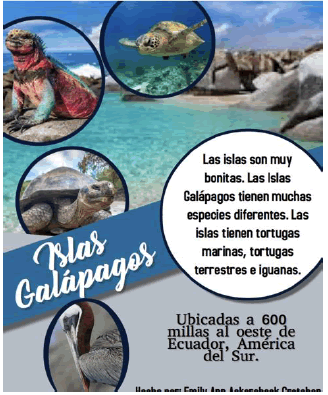
Figure 7: Electronic Poster Sample by Emily
Oral Assessments
Oral proficiency is often the most feared assessment for students. Horwitz, et al. (1986) points out that attempting to speak a foreign language involves risk-taking, vulnerability, and intuition. Oral proficiency assessment is challenging to evaluate due to its complexity and limited time available for interaction with students. The use of rubrics specifically designed for an introductory course is fundamental in the assessment process. Choi (2006) suggested novice interpreters have a different scale than those with more experience to achieve a more accurate rating for novice speech samples.
Students need to place all new vocabulary and grammatical information in a cultural context that helps them engage at a more communicative level where culture is infused in the foreign language classroom. Learning about how native people live and talk introduces a human side to the language. Overall, we propose that students understand components of Spanish language culture better; students need to go further than online grammar exercises, grammar practice, and dictionaries. They need to be able to experience the cultures where the language is spoken to put it into context with actual virtual language and culture experiences.
Summary
The analysis of these data collected from university-level students in an introductory Spanish language and culture course demonstrated how language learning and cultural awareness can be infused throughout a course. At the end of the course, students showed an increase in language development and cultural awareness. Concerning cultural awareness, students articulated a deeper understanding of a broader view of the world by sharing their final presentations. In these presentations students integrated experiences from activities completed outside the classroom combined with course requirements revealed more holistic descriptions of the language.
Conclusion
Undergraduate students in an introductory Spanish course without cultural exposure are like giving students an empty vessel of grammatical structures. Being exposed to diverse cultures helps students to approach language learning with new insight. Contrary to reciting memorization or writing down what they remembered to be correct. Current undergraduate students studying a second language can learn how the role of intercultural competence can facilitate the development of linguistic interaction with others. Therefore, the development of skills in undergraduate students to meet this intercultural competence challenge has emerged as a priority. Introductory language courses can establish the foundation for effective soft skills for the students’ careers after graduation.
We conclude the following: Students needed a space to interact and create a more organic mind set to complement better oral communication.
The cultural forums provided students with the opportunity to choose what areas they wanted to know about in more depth and provided conditions for cooperation, self-growth, cultural awareness, and the importance of pragmatics in communication. The word clouds provided visualizations of how the students were evolving, making meaning, connecting language learning with cultural awareness, reconciling their previous experiences with those developed during class, or interacting with them on student-led activities. Reading and writing results showed academic growth, and during the final exam the oral communication skills demonstrated by most of the students superseded previous scores.
The electronic posters created an opportunity for students to reflect their cultural awareness growth via classroom experiences by connecting images with words. Intercultural competence learning allows students to explore more deeply the meaning of words and expressions because there is a connection and understanding between words and grammatical structures in a cultural setting. Students who have the opportunity of transdisciplinary experiences early in their undergraduate experience and our curriculum design can ensure future graduates build a solid career for the world they are going to live in.
Students were able to see the similarities and differences between their personal cultural experiences and what they learned from their cultural explorations in class. This approach of language and culture learning experience provides the students with the opportunity to see a holistic view of the world. Typically, universities retain programs of study only at the intermediate or advanced course level only for students pursuing a degree in Spanish. Our study emphasizes a need to re-examine the potential for more inclusive language and culture courses starting at the introductory level.
An introductory Spanish curriculum designed for future graduates of any major is enriched and completed with the dichotomic effect of language and culture learning with a symbiotic environment denoting a mutually beneficial relationship between distinct groups of people. Through language and intercultural discovery, students can understand and pursue a more inclusive mindset to facilitate understanding of diversity. Inclusion as a first step to cultural engagement, and language learning can support graduates to critically examine global challenges in their communities.
References
- Applebaum B. (2017). Comforting discomfort as complicity: White fragility and the pursuit of invulnerability. Hypatia: A Journal of Feminist Philosophy, 32(4), 862–875.
- Annamalai E., & Skutnabb-Kangas T. (2020). 19 Social justice and inclusiveness through linguistic human rights in education. In A. Schalley & S. Eisenchlas (Ed.), Handbook of Home Language Maintenance and Development: Social and Affective Factors (pp. 377-400). Berlin, Boston: De Gruyter Mouton.
- Haugen E. (1972). The Ecology of Language. Standford, CA: Standford University Press.
- Horwitz E. K., Horwitz M. B., & Cope J. (1986). Foreign Language Classroom Anxiety. The Modern Language Journal, 70(2), 125–132.
- Choi J. Y. (2006). Metacognitive evaluation method in consecutive interpretation for novice learners. Meta, 51(2), 273-283.
- Ghiara V. (2020). Disambiguating the role of paradigms in mixed methods research. Journal of mixed methods research, 14(1), 11-25.
- Honarbin-Holliday, Mehri. (2005). ‘Art education, identity and gender at Tehran and al Zahra Universities’. Unpublished PhD thesis, Canterbury Christ Church University.
- Kassam K. S. (2010). Pluralism, resilience, and the ecology of survival: Case studies from the Pamir Mountains of Afghanistan. Ecology and Society, 15(2), 1–14.
- Klauda S.L., Guthrie J.T. (2015). Comparing relations of motivation, engagement, and achievement among struggling and advanced adolescent readers. Read Writ 28, 239–269.
[Crossref] [Google Scholar] [PubMed]
- Kuhn T. S. (1996). The structure of scientific revolutions, 3rd ed. Chicago: University of Chicago Press.
- Ladson-Billings G. (1995). Toward a Theory of Culturally Relevant Pedagogy. American Educational Research Journal, 32(3), 465–491.
- Liu O. L. (2017). Ten years after the Spellings Commission: From accountability to internal improvement. Educational Measurement: Issues and Practice, 36(20), 34–41.
- Piaget J. (1959). The language and thought of the child, 3rd ed. (M. Gabain & R. Gabain, Trans.). Routledge/Taylor & Francis Group.
- Tsuda Y. (2014). The hegemony of English and strategies for linguistic pluralism: Proposing the ecology of language paradigm. In M. K. Asante, Y. Miike, & J. Yin (Eds.) The global intercultural communication reader. Routledge. (pp. 445–456).
- Vygotsky L. S. (1987). Thinking and speech. In R.W. Rieber & A.S. Carton (Eds.), The collected works of L.S. Vygotsky, Volume 1: Problems of general psychology (pp. 39–285). New York: Plenum Press.
- Znaniecki F. (1969). On humanistic sociology. University of Chicago Press.
Author Info
Claudia Sanford*Received: 28-Jul-2022, Manuscript No. jflet-22- 70578; , Pre QC No. jflet-22- 70578 (PQ); Editor assigned: 01-Aug-2022, Pre QC No. jflet-22- 70578 (PQ); Reviewed: 15-Aug-2022, QC No. jflet-22- 70578; Revised: 22-Aug-2022, Manuscript No. jflet-22- 70578 (R); Published: 29-Aug-2022
Copyright: This is an open access article distributed under the terms of the Creative Commons Attribution License, which permits unrestricted use, distribution, and reproduction in any medium, provided the original work is properly cited.